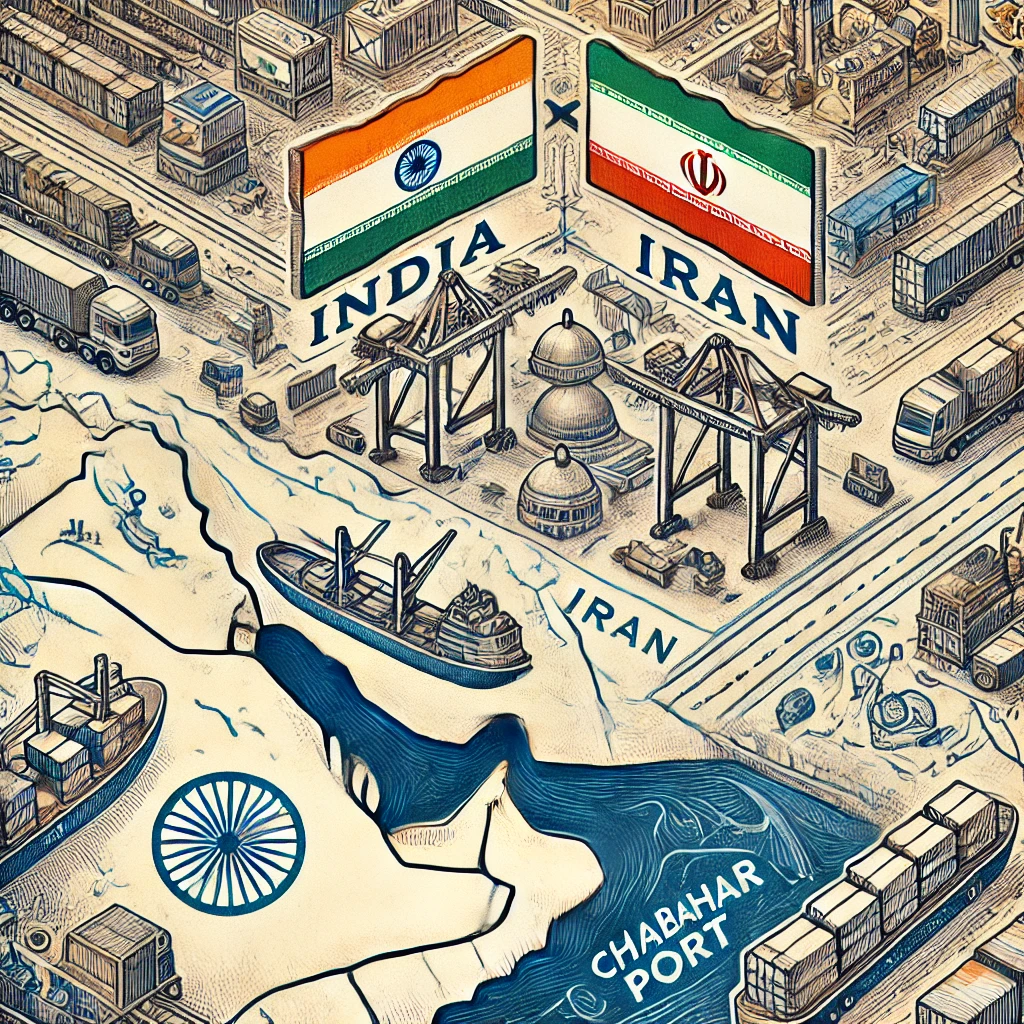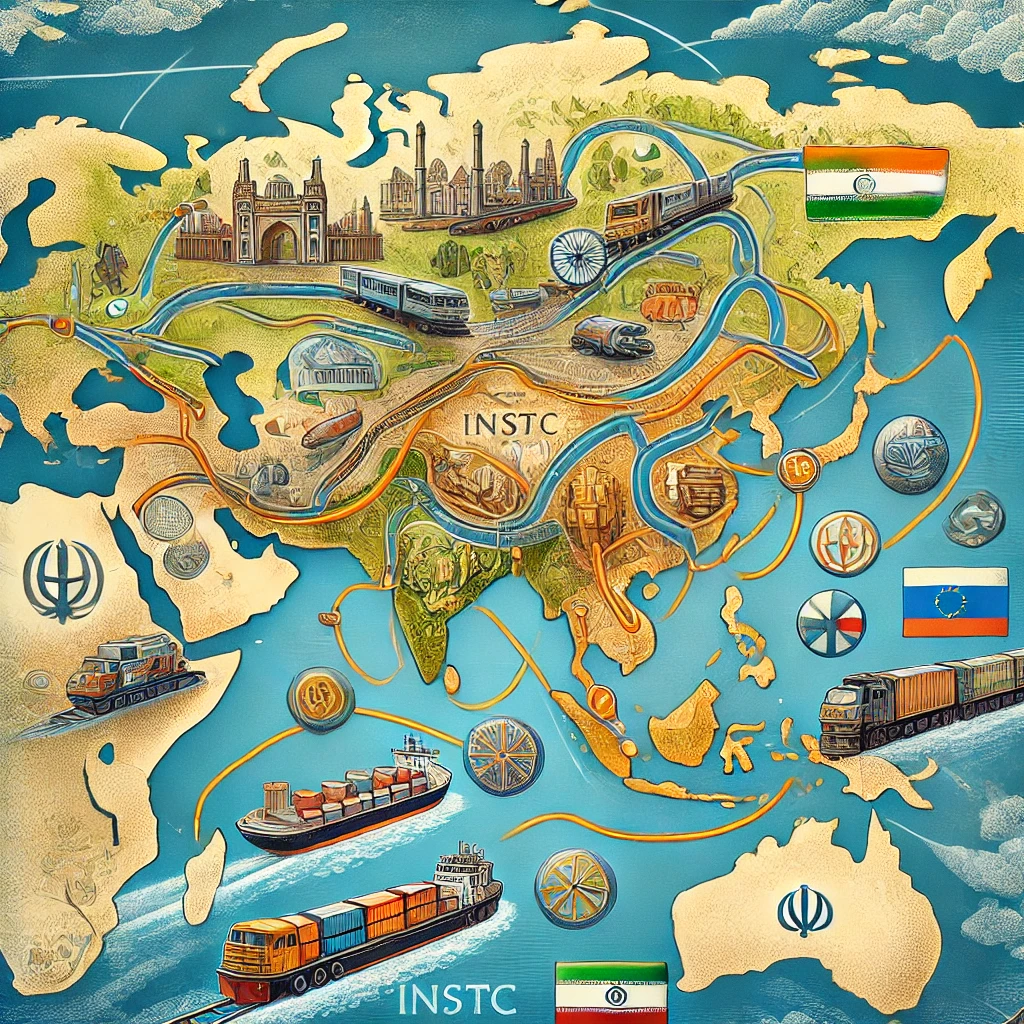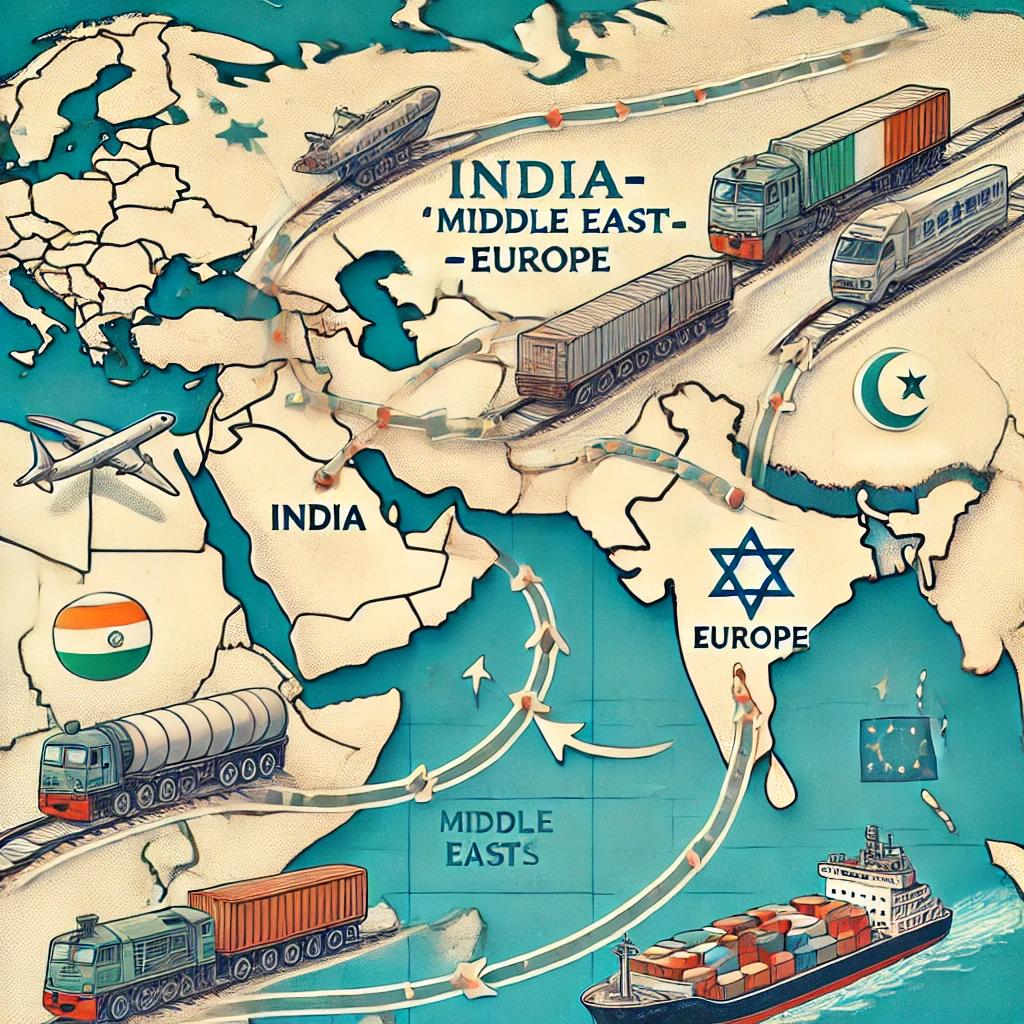India and Iran recently signed a 10-year contract to operate the Chabahar port, a major step in India’s strategic and economic vision for Central Asia and beyond. This agreement between Indian Ports Global Ltd. (IPGL) and Iran’s Port and Maritime Organization (PMO) will enable the operation of the Shahid-Beheshti terminal, providing India with a vital trade route that bypasses Pakistan.

Importance of Chabahar Port for India
Chabahar is Iran’s oceanic port nearest to India, situated in the Sistan and Baluchistan Provinces on the Makran coast, in the Gulf of Oman. The port project has two main ports: Shahid Kalantari and Shahid Beheshti. India’s involvement in developing the Shahid Beheshti port demonstrates its commitment to establishing a strategic foothold in the region.
Progress and Updates
India signed an MoU for Chabahar’s development in May 2015 and a trilateral agreement with Iran and Afghanistan in May 2016 to establish the Chabahar Project. This pact aims to improve trade connectivity between the three countries, using Chabahar as a key transit point. Despite delays due to disagreements, such as the location of arbitration for disputes, a compromise has been reached, and a 10-year agreement with automatic renewal provisions has been signed.
Significance of Chabahar Port
- Alternative Trade Route: Chabahar offers India a route to Afghanistan and Central Asia that bypasses Pakistan, reducing dependency on its neighbor and improving access to the International North-South Transport Corridor (INSTC).
- Economic Benefits: The port will enhance trade with Central Asia, Russia, Eurasia, and Europe, potentially saving 30% in costs and 40% in transportation time. Central Asian countries like Kazakhstan and Uzbekistan, lacking direct sea access, are keen to utilize Chabahar to connect to the Indian Ocean.
- Humanitarian Assistance: Chabahar can be crucial for humanitarian aid and reconstruction in Afghanistan, as evidenced during the COVID-19 pandemic when India used the port to supply wheat and pulses.
- Strategic Influence: Developing Chabahar enhances India’s strategic influence in the Indian Ocean, countering China’s development of Gwadar port in Pakistan and addressing sea piracy in the Arabian Sea.
Challenges
- US Concerns: The US has warned India of potential sanctions due to its dealings with Iran. India previously received exemptions to advance the port’s development and a rail link to Afghanistan.
- Regional Tensions: Instability in Afghanistan and strained relations between Iran and its neighbors impact trade. Political issues in neighboring countries also pose challenges.
- Competition: Competing projects like the India-Middle East-Europe Economic Corridor (IMEC) and Chinese investments in Chabahar can undermine India’s interests.
- Infrastructure Development: Significant investment and expertise are required for infrastructure improvements in the Chabahar Project. Delays can impede progress.
Economic Ties Between India and Iran
In FY 2022-23, bilateral trade between India and Iran was USD 2.33 billion, with agricultural goods being the main exports from India. Despite a decrease in total trade compared to the previous year, both countries continue to explore areas of cooperation. However, India currently does not import Iranian oil due to US sanctions.
Understanding the Chabahar Port agreement is vital for UPSC aspirants to grasp India’s foreign policy dynamics, regional connectivity strategies, and economic interests, which are essential components of the UPSC syllabus.
Conclusion
In conclusion, the Chabahar Port project signifies a strategic milestone for India, bolstering its trade routes and regional influence. Despite challenges like U.S. sanctions and regional instability, this port offers India a unique avenue to bypass Pakistan, enhance trade, and solidify its geopolitical stance in Central Asia. UPSC aspirants should keenly analyze these dynamics to understand India’s broader strategic imperatives.


